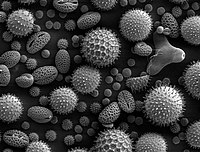
Photo from wikipedia
AIM The use of carbohydrate-binding proteins (lectins) to isolate urinary extracellular vesicles (uEVs) was investigated and the captured subpopulations were characterized. METHODS Pooled uEVs from multiple healthy donors were exposed… Click to show full abstract
AIM The use of carbohydrate-binding proteins (lectins) to isolate urinary extracellular vesicles (uEVs) was investigated and the captured subpopulations were characterized. METHODS Pooled uEVs from multiple healthy donors were exposed to lectin-conjugated or antibody-conjugated beads. Recovered uEVs were evaluated by protein estimation, transmission electron microscopy, nanoparticle tracking analysis and lectin microarray profiling. RESULTS uEVs isolated by lectin- and antibody-based affinity capture exhibited distinct variations in size and surface content. Transmission electron microscopy confirmed similar EV diameters to those established by nanoparticle tracking analysis, but total particle counts did not correlate closely with protein-based quantification. Lectin microarray profiling demonstrated capture-dependent differences in surface glycosylation. CONCLUSION Selective, carbohydrate-mediated EV isolation by lectin affinity approaches may prove immediately useful for research and find eventual use in clinical applications.
Journal Title: Nanomedicine
Year Published: 2017
Link to full text (if available)
Share on Social Media: Sign Up to like & get
recommendations!